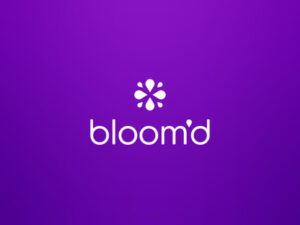We have spent several weeks looking at marketing shifts in social media and film media. Today we are going to shift our focus to take a closer look at changes in logo design. Each year all the cool logo and design sites release their lists of trends to look for and avoid for the coming year.
We can save you the read on logo trends—most of the articles say the exact same things.
Frequently, the big brands set the trends but there are a few design cowboys and cowgirls blazing trails on the outskirts of the reservation. Available technology and changes in the tools designers have at their disposal can also influence these shifts and trends.
It’s good to stay current and be in the know, but it is also important to remember that trends go both ways – up and down. What is great one year could be out‐of‐date the next. Meanwhile your customers get whiplash trying to keep up with your annual design changes.
What we often see is that trends are set at the high “big brand” levels and the copycats trickle down to the smaller brands and startups, as well as the competition (which can cause big headaches for some brands). Frequently, the businesses and organizations with small budgets don’t have the resources to stay on top of the shifts and keep their looks current and fresh.
Our team suggests a different approach. Instead of attempting to keep up with the trends and change your logo year after year, follow logo design best practices that are truly evergreen and strong enough to withstand the winds of change.
Here’s how to create and maintain a great logo without falling into the trend-hole:
1. Make it Simple
Of all the elements that go into great logo design, simplicity may be the most important. Trends can be exciting and enticing but the strongest logos are the ones that stick with timeless characteristics. Design trends may include gradients or use of color layering — which can be effective in the right context — but most brands will do better to avoid complex designs and adopt a mark that communicates a clear and distinct message. Complexity can sometimes equal confusion — something you do not want with your logo. When designing or redesigning your logo, go for strong and simple and make a timeless investment in the future of your brand. You don’t want to find yourself in a position of always reinventing your look. When in doubt remember: less is more.

2. Make it Versatile
Successful logos have unlimited functionality in terms of size, application and scalability. This is why simplicity must come first. Incorporating too much complexity into your logo inhibits the functionality and flexibility necessary for multiple applications. You want to be sure your logo displays correctly in all the different places and spaces where you want it to be, whether that’s on the side of an ink pen, the back of a t-shirt, or on the side of a New York City skyscraper. Complex logos are difficult to scale, so again, a simple logo will go further and save you money and time in the long run.


3. Make it Authentic
Your logo should be an accurate reflection of your brand’s personality and promise. Just because an idea is trending does not mean it authentically communicates the experiences and personal interactions your customers have with your business or organization. Never let trends drive a wedge between your look and what your brand is promising to deliver. Getting too caught up in trends can create a disjointed association between your logo and your brand. This is the big risk of chasing after the trendsetters. It’s good to be inspired by the latest approach but implementing changes year to year can drive a wedge between you and your customers.


4. Make it Original
Everyone agrees that great logos are memorable and unique, so it’s not uncommon to see copycats of these logos emerge as trends change from year to year. While it’s fine to allow certain elements of a successful logo to inspire your design; it is altogether foolhardy to follow a design so closely that it becomes a direct replica. The entire point of developing a logo is to give your brand a visual representation of your message, personality, and voice in the marketplace. If you sound the same and look the same as someone else more successful than you, no one will remember you, or worse they will only remember that you tried to copy a competitor.


5. Make it Enduring
Have you noticed how some of the biggest, most recognizable brands in American history look very close to the same as they did at inception? Brands like IBM, Coca-Cola, General Electric, Ford, and Disney haven’t seen too much variation over the years and there is a reason for that. But the enduring qualities are not reserved only for the big name brands. Even the smallest mom and pop shops should be shooting for that enduring essence of logo design.
At the same time, be sure you don’t confuse a logo for a brand. A logo is an identifying mark or visual label that helps recall name, personality, and brand recognition with a product or a service — but the logo alone is not your brand. As Amazon’s Jeff Bezos famously said…
a brand is what people say about you when your not in a room.
If you want your brand to leave a legacy that outlives you, it may be wise to leave the trends behind and focus on enduring qualities of simplicity, authenticity, versatility, and originality.

But the trends can still remain important, right?
How can you know if one of the new trends is one you need to follow?
This is where we come in. As we work with our clients, we work closely with you to fully understand what makes your brand distinct and unique and keep you from jumping on a bandwagon that will only keep you buried under a sea of copycats. We can also assist with your overall brand strategy and help you make sure that you’re not confusing logo with brand. We’d be happy to dive deeper into these details with you, let us know how we can help!
[inf_infusionsoft_inline optin_id=optin_14]


